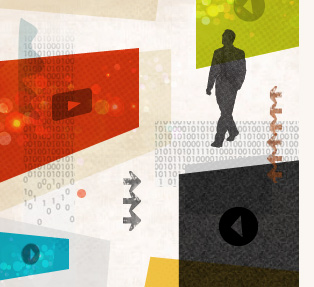Chances are you’ve seen Internet Protocol TV (IPTV) but didn’t know it. Different types of IPTV are popping up in our daily lives ranging from Video-On-Demand to being greeted by pre-recorded video messages at the gas pump or ATM. And many businesses are adopting IPTV to broadcast live or on-demand video content to employees, partners, customers, and investors.
But what does this mean for the network team? In this article we’ll outline IPTV basics and focus on primary management challenges and best practices.
IPTV Basics
In regards to your company, IPTV simply means it has systems in place that can send, receive, and display video streams encoded as IP packets. IPTV video signals can be sent either as a unicast or multicast transmission
- Unicast: involves a single client and server in the process of sending and receiving video and communication transmissions. Video-on-Demand is a great example of this.
- Multicast: the process of one party broadcasting the same video transmission to multiple destinations. An example would be a retail chain broadcasting the same video to kiosks in all their stores.
Monitoring Challenges & Best Practices
Implementing best practices can ensure IPTV runs smoothly on your network and performance issues are minimized. As IPTV is deployed, make sure your team is doing the following:
- Get Visibility, Get Resolution: To ensure video quality, monitor at several points along the video delivery path: headend (point of origin), core, distribution, access, and user/receiver. Critical for capturing accurate metrics and isolating problem source.
- Minimize Delay and Packet Loss: IPTV video quality can often be compromised by small variations in delay or any significant packet loss. Track, baseline, and alarm on IPTV metrics to proactively identify issues.
- Avoid Bandwidth Surprises: Transporting video across IP infrastructure consumes considerable bandwidth. Monitor regular use to avoid exceeding thresholds and assist in capacity planning. Reduce the impact of outages by confirming backup network paths have required capacity to carry video.
- Don’t Monitor in a Vacuum: Confirm your existing performance monitoring tools can track IPTV traffic and metrics alongside existing applications. Incomplete performance views will cause your team to waste time attempting to guess IPTV performance or the impact of other applications on IPTV transmissions.
- Play Nice with the Video Group: On a converged network, troubleshooting any video issue will involve working with the video group. Attempt to establish processes for coordinating troubleshooting efforts, before problems occur.
This article serves as a starting point for understanding IPTV performance challenges and best practices to implement for ensuring success. For more in-depth information on the technologies, critical network preparations, and IPTV monitoring metrics, check out the following resources:






